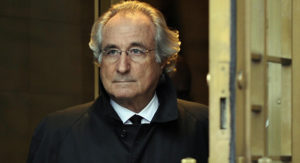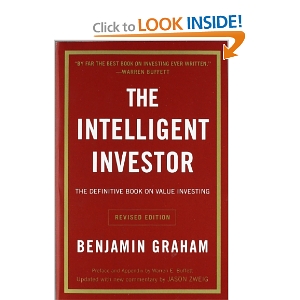
Police arrested seven executives connected to the $1+ billion hedge fund Platinum Partners in late December, for fraud.
The charges against them include overvaluing assets and a Ponzi-like practice of paying departing investors with new investors’ money.
Platinum Partners reminds me of lesson number one on spotting financial fraud: If an investment fund never, ever, shows a loss, it’s probably a fraud. I’ll tell a story of how I learned this lesson well, back in 2008.
But first, the rest of the Platinum Partners story. In October 2015, Bloomberg News reported on Platinum Partners’ astonishing investment track-record. One of Platinum’s main funds reported gains in 118 of 119 months – from 2005 to 2015 – a particularly rocky time for investing. Platinum never even lost money in 2008, when every other risky fund lost money.
And Platinum did not invest in safe, low-return strategies either. Rather, they sought out unusual niches in litigation-finance, payday-loan funding, and life-insurance strategies, the kind of investment that pays off when someone dies.
Bloomberg quotes a hedge fund researcher who analyzed Platinum’s business, and came away skeptical:
“When you see nearly flawless returns, it’s intriguing, but also potentially worrying. Even cursory due diligence showed that a number of their dealings ended in death, litigation or handcuffs. Those are the kinds of red flags you can see from outer space.”
In that time Platinum reported an annualized return of 13.5 percent. As it turns out, however, this kind of flawless track record usually only happens when somebody cooks the books.
(Attention fraudsters: You need to be subtler about your fakery. Also: This is not actual financial or legal advice!)
My investor’s experience
The way I learned this number this lesson – that the absence of monthly losses means it’s probably a fraud – involves a story about an investor in my own investment fund, which I began in 2006.
One of my earliest investors was a wealthy man (I’ll call him William) who was introduced to me with the “good” and the “bad” of his investment style explained upfront. The “good” was that he’d allocate a small amount of money early on in the life of a fund with small managers like me, who needed to build up a track record over time. If I produced steady positive returns, William would increase his investment. The “bad” was that if I ever experienced a down month, meaning negative returns, William would probably pull all his money out of my fund very quickly.
 In the investment management world this is a problem because we all want to attract “sticky” money that won’t leave the fund at the first downturn. And some negative months are inevitable in any risky fund. Nevertheless, I accepted his investment. As a small investment manager, I decided I needed the assets.
In the investment management world this is a problem because we all want to attract “sticky” money that won’t leave the fund at the first downturn. And some negative months are inevitable in any risky fund. Nevertheless, I accepted his investment. As a small investment manager, I decided I needed the assets.
I experienced my first significant down month in the Summer of 2008. I made a phone call to William, knowing he’d be more upset than my other investors. Whoo-boy, that call went badly. He insulted not only me, but my wife (who he had never met) in one of the least pleasant conversations of my life. As I had expected, he asked for his money back at the earliest possible moment, which would still be months later.
I next spoke to William on the phone in mid-December 2008. By then, the financial world as we knew it – following the collapse of AIG, Lehman Brothers, Fannie Mae etc – had been completely upturned.
By December, however, William was awfully polite and cheerful with me, and I quickly figured out why. I’d be sending him his money back, with only a minor loss. He had much worse problems than his comparatively small investment with me.
 The news of Bernie Madoff’s ponzi scheme had broken a week earlier. Madoff’s claim to fame, prior to exposure, was never suffering a single down month. Of course, William had been an investor with Madoff.
The news of Bernie Madoff’s ponzi scheme had broken a week earlier. Madoff’s claim to fame, prior to exposure, was never suffering a single down month. Of course, William had been an investor with Madoff.
Not only that, however, William had realized by late 2008 that he had invested with at least two other less well-known funds that turned out to be fraudulent Ponzi schemes, one in Florida and the other in Minnesota.
Here’s the thing about William’s strategy: If you invest in lots of funds, and then pull out your money from any funds that have a monthly loss, then you have inadvertently created an algorithm for putting money into the largest number of Ponzi schemes possible.
In the investment world, “you only find out who is swimming naked when the tide goes out,” said a guy. (Ok, that guy was Warren Buffett.)
Well, by December 2008, William was buck-naked at low tide with sharks surrounding him and a steady bleed from his right knee, metaphorically speaking. And it couldn’t have happened to a nicer guy. Yes, I still remember our June 2008 conversation.
But back to the main lesson: If you relentlessly seek out investment funds that never have negative returns – rejecting all those that sometimes lose money – after some period of time you will be left with a very peculiar basket of funds. As I learned from my investor William, that basket will be full of frauds.
 I haven’t reached out to William to find out if he’s invested in Platinum Partners, but I wouldn’t be surprised, assuming he hasn’t changed his investment strategy since 2008.
I haven’t reached out to William to find out if he’s invested in Platinum Partners, but I wouldn’t be surprised, assuming he hasn’t changed his investment strategy since 2008.
Now, maybe you’ll allow me to extend the metaphor a bit, from investment managers to people.
We naturally seek out flawlessness and celebrate genius. We crave apparent greatness. We want amazing people not just in finance but in many other aspects of our life.
But the frauds tend to be the ones who never admit of doubt. They never accept criticism; they never take responsibility for errors. They never have a down month. As for me, I’m much more impressed by the good ones – in money management and elsewhere – who constantly point out the limit of their own powers. They allow for errors, and they own up to them.
A version of this post ran in the San Antonio Express News and Houston Chronicle.
Post read (853) times.



